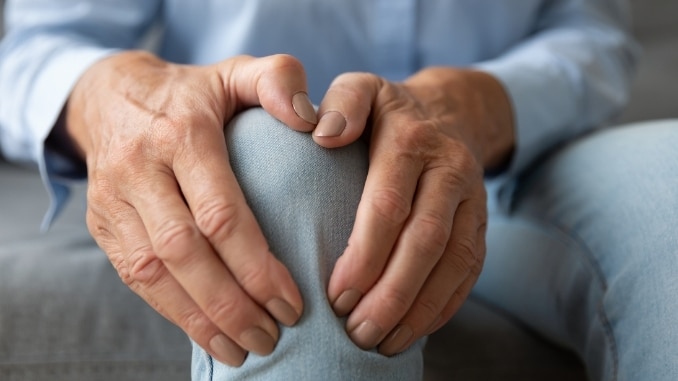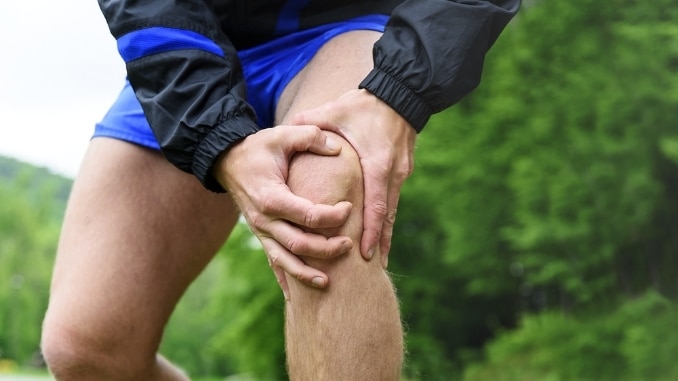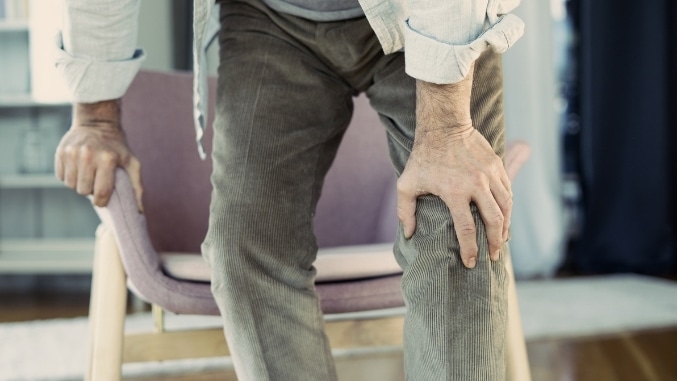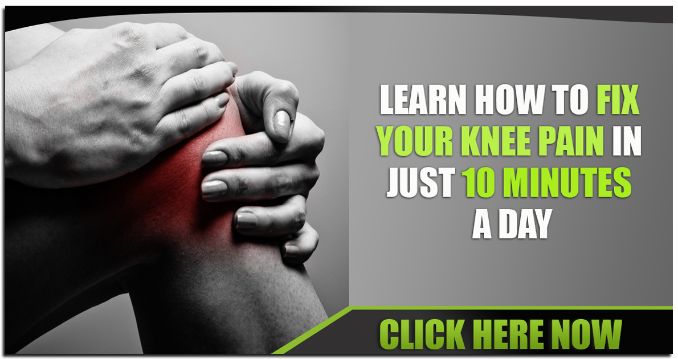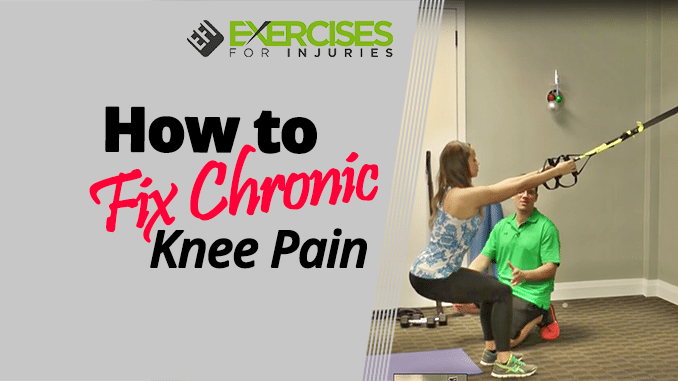
In this video, I wanted to share with you a comprehensive insight on how to fix chronic knee pain.
Enjoy the video below!
How to Fix Chronic Knee Pain
CLICK HERE to watch the YouTube video.
Take care!
Rick Kaselj, MS
If you are unable to watch or listen to the video above, check out the transcript below.
Hey! This is Rick Kaselj, injury specialist from ExercisesForInjuries.com. In today’s video, I’m going to go through How To Fix Chronic Knee Pain.
Understanding Chronic Knee Pain
So a lot of times with my clients what they’ve gotten is some sort of knee pain diagnosis. They wonder what they should do next. What are the knee pain exercises and stretches that they should focus in on? What are some of the knee pain treatments they can do at home? And what are the exercise that are going to provide them from knee pain relief? And I’m going to go through that in this video.
Home Treatments for Knee Pain
So what I end up starting off people with is really the three knee how to fix chronic knee pain treatments that you can do at home. It will immediately help relieve your knee pain.
1. Reduce Unnecessary Stress
The first thing is, decrease unnecessary stress. So the more load that you end up putting on your knee, you end up putting unnecessary stress. So it doesn’t allow the knee to recover and heal positions of stress like standing, also the more that you end up bending the knee. The more stress that you end up putting on the knee. So if you don’t have to stand, if you don’t have to bend your knees, then don’t. Don’t put that unnecessary stress and allow the knee to recover and heal.
2. Apply Ice to the Knee
The second thing is to ice the knee. Get off your feet, lie down or sit down with your knee in a straight position or just slightly bent, and then ice it especially, after activity. A long time standing, a lot of walking, ice the knee for 10 to 15 minutes. The ice helps relieve pain and also decreases inflammation so that knee can heal and recover.
3. Maintain Range of Motion
Now, the third thing that you should do when it comes to how to fix chronic knee pain treatment at home is to keep working on the range of motion and movement in that knee. And I’m going to get Alex to demonstrate. So with this one, what you’re doing is you’re having a seat, so we’re offloading. You’re not standing so there’s less stress on the knee. And what we want to do is we want to work on that range of motion or movement in that knee. So we can end up going through like straightening the knee out, straightening it out as much as you can. Then bringing that heel back and trying to work on that range of motion of the knee. So straightening and bending it back.
Then you can end up progressing to bringing that knee up towards your chest. So we’re working on that range of motion in the knee. And with each of those, you can do five repetitions in a smooth and controlled movement. Pick whichever one is most comfortable for you to do. You can start with the sitting, bringing the heel back.
When that’s easy then you can go to that knee-to-chest one. Because what we want to do is we want to maintain that range of motion in that knee. We don’t want the knee to lose that range of motion. And, to end up getting stiff because that’ll end up affecting. When it comes to recovering from knee pain and healing and recovering from that knee.
Focus on Massage
So those are the three knee pain treatments at home that you can do. Then we end up going into not the stretching exercises, I end up focusing in on massage.
So I wanted to go through the number one how-to-fix chronic knee pain massage exercise that I recommend people doing now. You can see with Alex. She’s moving down to the floor and what we have is a super duper tennis ball. So this is a dog ball that you can get at the dollar store. It’s firm and it ends up being excellent for self-massage and to massage out the quadricep area. So you’re lying down, you’re almost in a plank position. You’re going to move that ball up just below your hip. Then you’re going to roll up to just above your knee. You’re going to go through that whole quadricep area.
So you’re going to go up and down the middle part of the quadriceps, out to the side.nd more towards the middle and you’re going to do about five repetitions. Up and down is one repetition and then you’re going to stop and see how that quadricep feels. Does it feel looser? Does it feel not as tight? So, does it feel like you’ve got a bit of a massage from the exercise? And then you can end up progressing to ten repetitions.
Now, I know everyone’s knee pain ends up varying. You might not be able to get down on the mat. I wanted to show you what you can do when it comes to sitting in the chair. So what you can do is you can sit on the chair. You can straighten your right leg and use your hand. You’re pushing into the ball and you’re rolling the ball up and down that leg. So if you’re not able to get down to the ground. It’s difficult for you to get up and down from the ground. You can do this from sitting. Sitting nice and upright and then going through that massage through that quad area. So that ends up being the number one knee pain massage exercise. So I would do this before I end up getting into the stretches and the exercises.
Now, after the massage exercise, we end up moving to the two knee pain stretches that I recommend. So the first one is a standing hip flexor stretch. So you’re standing, you can have the hand against the wall to eliminate balance because we want to really focus on the stretch. And Alex is taking a big step forward, she’s flat in the front foot, she’s on the ball of the back foot, both legs are straight ahead and she’s going to tighten up her abdominal area. She’s going to bring her hips forward and then she’s looking for a light stretch in that thigh area and even up into the hip.
So what oftentimes happens with knee pain is, there ends up being tightness in the quadriceps and in that hip flexor area. And that tightness ends up being really slow. And light pulling on that knee and that slow and light pulling leads to more knee pain, progressing knee pain, and it prevents that healing and recovering that you want when it comes to a knee injury or knee pain. Now, how long you’re going to hold that stretch? I’m looking for 20 seconds, light stretch, and we’re going to do it on both sides, so you can alternate back and forth. So even if you have the knee pain on one side, I would recommend going through it on both sides.
Now, the second is a quad stretch. So I would end up doing this in standing. You’re going to bring the heel towards the seat and then you’re going to bring that knee back a little bit more, targeting the hip flexors a little bit more. So we’re standing nice, good upright posture, hands up against the wall in order to eliminate balance. You can have that knee a little bit forward if you feel a strong stretch just in that position. If you’re not feeling much, you can bring it back and that targets the hip flexors a little bit more.
Now if you can’t do this, you have too much knee pain, you can’t get into this knee bending position, what you can do is stand on one leg and bend the knee to whatever level you can and then bring it back, pushing it back. Now what we’re doing is working whatever range we can and bringing that leg back, we’re working that hip flexor, we’re stretching out that hip flexor which oftentimes ends up being tight in people that have knee pain. So that’s where I would start people off before we go into the main exercises that I get people on. So get that diagnosis, look at doing those three pain treatments at home, do the knee pain massage exercise and do the stretching exercise and then we move into the main knee pain exercises.
Okay. So now we’re moving into the three knee pain exercise that I end up recommending people to do. And usually I give two options for each of them, but then it ends up being three main exercises that you should end up doing for your chronic knee pain. So the first one ends up being a wall plank and Alex is going to demonstrate.
So you’re finding a wall, you’re going to come into that plank position and then you’re going to line your body into a nice straight line. You’re on the forearms, elbows are just a touch below shoulders, your head, shoulders, hips, legs and ankles are in a straight line. Hold that position for five seconds and then you can step back into that standing position. Take a rest and then you can go back into that plank position. So you’re starting off with five seconds, doing five repetitions.
And now you might be asking like why am I doing this? Why am I doing an abdominal core exercise for my knee? What they found is people with knee pain oftentimes end up having poor core stability, abdominal strength. And with that poor abdominal strength and core strength it ends up leading to making their knee pain worse. So what we’re working on is strengthening up that core which also strengthens up the hip, helping when it comes to less stress on the knee, allowing for a decrease in knee pain and allowing for your knee to recover.
Now, with this wall plank you can progress it. You can go into that wall plank and we can start adding leg kicks. So you just bring the leg back from zero degrees to about 45 degrees and then back and then the other side. You can do five repetitions on each side for a total of ten. What we’re trying to do is just have that movement happen in the hip, the low back is not changing. Everything else is in good alignment: forearms, elbows just below the shoulders.
Tighten that abdominal area, bringing that leg back and just that hip ends up moving. And with this one we end up challenging the core more but then we also challenge the stability in the hip. So a lot of people end up being weak in the hip and that weakness ends up putting more stress on the knee, injuring the knee and leading to more knee pain. So that ends up being the first knee pain exercise I would recommend, wall planks or wall planks with leg kicks.
Now, the second one is a vertical shin squat. Now I can end up using the doorframe to do this exercise, but what we’re going to end up utilizing is a suspension trainer so that you can see it better, but at home, you can just use the doorframe. Then what Alex is doing, she’s got the suspension trainer, she’s putting her weight back and what she’s trying to do is squat down and really keep that shin vertical and then coming back down.
I want her to build to a point where she’s bringing the hips just below the knees and then back up. So with the vertical shin, it puts the least amount of stress on the knee when it comes to that squatting position. And then also we have our weight back so it’s more back on our heels, targeting the hamstrings and the glutes a lot more and a lot less the quads. You can just use the suspension trainer to do that or you can grab the doorframe to do that. Oftentimes, when I get people to do that exercise what they’ll end up saying is, “Well, I get knee pain with squatting and what should I end up doing?” Well, make sure that you’re doing the vertical shin when doing the exercise.
The second thing is there’s two little tweaks that you can do if squatting is bothering you. The first one is just bringing the feet a little bit further apart. If your feet are narrow and then going through a squatting movement, it is putting a lot more stress on the knee and you can see Alex really has to lean forward in order to go through that movement. And the more she leans forward, the more stress it puts on the knees. If she can go with a wider stance and go into that squatting movement, she doesn’t have to lean as much forward when going through the movement. So she’s able to have her weight a little bit more back. That is the second tip if you have pain, bringing the feet a little bit further apart and the toeing out a little bit.
The third tip is to try to keep that weight back. So Alex will go through a squat with most of her weight on her toes, putting a lot of stress on the knee joint. It works the quads and the quads are really pulling on the knee joint, irritating the knee, increasing the risk of a knee injury and making knee pain worse. What we want to do is keep that weight on the middle of the foot or even back on that foot. It focuses more on the hamstrings, less on the quads and then also focuses more on the gluteus maximus.
So try those three little tweaks. A vertical shin, feet a little bit wider apart and then weight back on the mid foot or the heel if you end up having pain when it comes to squatting.
Now, going into the last knee pain exercise that I recommend. It ends up being an extension of the wall plank specifically to the wall plank with leg kicks. What we’re going to do is a single leg standing or single leg balance. So Alex is going to stand on one leg. With the standing on one leg, you can start off with your hand up against the wall because we want to eliminate balance. Because what we’re trying to focus in on is getting the technique perfect. Then we can take the hand away from some support like the wall.
So Alex has got weight even on the foot, slight bend in the knee and then she’s just going to hold that position, holding for a period of time. At the start for you it might be like five seconds. But then you can progress to about thirty seconds and going through five repetitions. So we’re really working on the stability in the ankle, stability in the knee and then really in that stability of the hip because a lot of people, especially runners. Will end up having weakness in the hip and that ends up putting unnecessary stress on the knee leading to knee pain.
Now we can progress this one and we can do an exercise that I call the folding helicopter. Which is a progression of this where you’re going to drop that hip and then you’re going to come back up. You got your weight even on the foot, knees bent, bend in the hip.
You’re going to drop the opposite hip and then you’re going to come up and go back to square. With that dropping of the hip and then bringing it back to square. We’re really working on hip stability, which is important when it comes to recovering from knee pain. And it’s also a common thing that you’ll end up seeing with people that run, that have knee pain from running. They end up being weak in the hip. They have weak stability in the hip and this ends up being an excellent exercise for that. Not just for runners but for anyone that ends up having knee pain.
So there you go. That ends up being a comprehensive insight on how to fix chronic knee pain.
If you are suffering from any kind of knee discomfort and want to end the pain permanently. Then click here to check out the Knee Pain Solved program.

